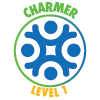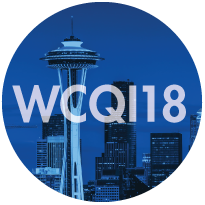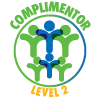4 Posts
Hey SQD community!
I work for a credit union in the Midwest and I'm currently researching the current trends in Process Improvement for work (and for school - I'm a grad student). I'm finding there are a lot of different "flavors" of Process Improvement - from lean, lean six sigma, to ISO 9000, Kaizen, TQM, BPM, Baldridge, and the list goes on. What techniques are you guys using to improve your processes and drive quality in the service arena?
Looking forward to hearing what's being used out there.
Robert
I work for a credit union in the Midwest and I'm currently researching the current trends in Process Improvement for work (and for school - I'm a grad student). I'm finding there are a lot of different "flavors" of Process Improvement - from lean, lean six sigma, to ISO 9000, Kaizen, TQM, BPM, Baldridge, and the list goes on. What techniques are you guys using to improve your processes and drive quality in the service arena?
Looking forward to hearing what's being used out there.
Robert
4 Replies
3 Posts
Hi, Robert.
It would be easy to get carried away and fill a full page with notes in response to your question. I'll try to be brief, and I'm sure I'll be incomplete.
First, to recite Six Sigma tenets and Lean doctrine in a service setting can draw blank stares or even hostility from those who don't see how easily those sets of tools can be translated from the factory to the office, so guerrilla Black Belting is sometimes needed. I'm reluctant to show any group of people a RACI or FMEA or QFD or any such tool and say, "Let's fill this out." They hate that. You have to gather all the information needed yourself, like a bloodhound, and then fill in the template in some dark corner of the office before unveiling to them what they've built and, more importantly, what it reveals about current performance and, most importantly, what will need to be done about it. Seven wastes of Lean will only be interesting if you can prescribe an immediate remedy.
On the positive side, the brilliance of a cross-functional process mapping exercise reveals every single time how today's work can be improved quickly. That, for me, is step number two for any initiative: get the right people together (in the room ideally, but virtually can also work) and map that process together. So valuable.
Brings up the question, "What is step #1?" Answer: Critical Success Factors. In any room or group of people or team meeting or executive powwow, an early question to ask is, "What are the desired outcomes of this work?" followed immediately by, "and how do we measure them?"
Sometimes they will not have an answer on metrics, or they'll say the work is too unique to measure. My response: Look at performance metrics in terms of Speed and Accuracy. You can, at least, measure how long something took to perform and whether or not it was done correctly on the first try. Build from there.
In case I've missed the point of your question, let me rephrase my response: It takes an eclectic approach, a variety of tools, an inquisitive mind, the courage to call out deficiencies, and the confidence to itemize the required interventions. It takes a deep tool box. It takes a quality professional.
--------
I failed in my attempt to be brief. A short answer would've been, "Go with Kaizen."
It would be easy to get carried away and fill a full page with notes in response to your question. I'll try to be brief, and I'm sure I'll be incomplete.
First, to recite Six Sigma tenets and Lean doctrine in a service setting can draw blank stares or even hostility from those who don't see how easily those sets of tools can be translated from the factory to the office, so guerrilla Black Belting is sometimes needed. I'm reluctant to show any group of people a RACI or FMEA or QFD or any such tool and say, "Let's fill this out." They hate that. You have to gather all the information needed yourself, like a bloodhound, and then fill in the template in some dark corner of the office before unveiling to them what they've built and, more importantly, what it reveals about current performance and, most importantly, what will need to be done about it. Seven wastes of Lean will only be interesting if you can prescribe an immediate remedy.
On the positive side, the brilliance of a cross-functional process mapping exercise reveals every single time how today's work can be improved quickly. That, for me, is step number two for any initiative: get the right people together (in the room ideally, but virtually can also work) and map that process together. So valuable.
Brings up the question, "What is step #1?" Answer: Critical Success Factors. In any room or group of people or team meeting or executive powwow, an early question to ask is, "What are the desired outcomes of this work?" followed immediately by, "and how do we measure them?"
Sometimes they will not have an answer on metrics, or they'll say the work is too unique to measure. My response: Look at performance metrics in terms of Speed and Accuracy. You can, at least, measure how long something took to perform and whether or not it was done correctly on the first try. Build from there.
In case I've missed the point of your question, let me rephrase my response: It takes an eclectic approach, a variety of tools, an inquisitive mind, the courage to call out deficiencies, and the confidence to itemize the required interventions. It takes a deep tool box. It takes a quality professional.
--------
I failed in my attempt to be brief. A short answer would've been, "Go with Kaizen."
53 Posts
Hi Robert,
I could echo a lot of what Tracy said! I leverage tools from Lean, Six Sigma, and BPM for the most part and adapt (often simplify) for the service arena.
The efforts that I believe have been most successful in my experience are typically centered around a cross-functional workshop (Kaizen-type approach). Typically, I first draft a Charter with a Sponsor to clearly identify the scope, problem statement, how success will be measured, etc. Then I go around the organization and talk to the subject matter experts, through 1:1s and focus groups most often. At the same time, I gather any quantitative and qualitative data I can, including customer feedback.
My primary role is a Customer Experience professional, as well as a Black Belt and BPMP, so I draft a Customer Journey Map as well as a Process Map (using BPMN if my goal is to get an end-to-end process into BPMS) to visualize the current state of things. I bring those maps, the collected pain points & opportunities, and other inputs into a cross-functional workshop. The workshop is then used to quickly align on the current state then focus on the desired future state. I sometimes draw on tools like FMEA, SIPOC, and others within the workshop but often the visual maps are the core focus that drive a lot of discussion and "ah ha" moments. The workshop wraps up with an agreed set of prioritized actions with owners and next steps.
As Tracy said - we start with understanding the desired outcomes and how those outcomes will be measured. Voice of the customer is critical and must be translated into requirements and actions. Cross-functional involvement and buy-in is necessary for success. And the Quality professional needs to handle the heavy lifting to bring things to the team in a way that the team feels they've all had input into it and that is decision-ready for improvements.
I could echo a lot of what Tracy said! I leverage tools from Lean, Six Sigma, and BPM for the most part and adapt (often simplify) for the service arena.
The efforts that I believe have been most successful in my experience are typically centered around a cross-functional workshop (Kaizen-type approach). Typically, I first draft a Charter with a Sponsor to clearly identify the scope, problem statement, how success will be measured, etc. Then I go around the organization and talk to the subject matter experts, through 1:1s and focus groups most often. At the same time, I gather any quantitative and qualitative data I can, including customer feedback.
My primary role is a Customer Experience professional, as well as a Black Belt and BPMP, so I draft a Customer Journey Map as well as a Process Map (using BPMN if my goal is to get an end-to-end process into BPMS) to visualize the current state of things. I bring those maps, the collected pain points & opportunities, and other inputs into a cross-functional workshop. The workshop is then used to quickly align on the current state then focus on the desired future state. I sometimes draw on tools like FMEA, SIPOC, and others within the workshop but often the visual maps are the core focus that drive a lot of discussion and "ah ha" moments. The workshop wraps up with an agreed set of prioritized actions with owners and next steps.
As Tracy said - we start with understanding the desired outcomes and how those outcomes will be measured. Voice of the customer is critical and must be translated into requirements and actions. Cross-functional involvement and buy-in is necessary for success. And the Quality professional needs to handle the heavy lifting to bring things to the team in a way that the team feels they've all had input into it and that is decision-ready for improvements.
17 Posts
Robert, while I agree with both Tracy and Therese, a grass roots approach also works wonders.
My primary focus is in change management (specifically people change), so my approach always starts with the voice of the “customer”. Where are the pain points? What’s the word on the street (or the water cooler chatter). Identifying these low hanging fruit are usually quick wins, that also increases employee engagement (they see that you’re there to help not replace them), which leads to more open discussion and ongoing involvement/identification of improvement opportunities.
Maybe not exactly what you’re looking for, but maybe another thought starter for you.
**EDIT**
I should add, being aware of your audience is critical. I’m not your typical quality person, in that if you came to me talking about quality tools and processes I’d tune out. That’s why I mention the grassroots approach. Talk to them in a way that’s meaningful and you’ll be surprised what you hear. 😁
My primary focus is in change management (specifically people change), so my approach always starts with the voice of the “customer”. Where are the pain points? What’s the word on the street (or the water cooler chatter). Identifying these low hanging fruit are usually quick wins, that also increases employee engagement (they see that you’re there to help not replace them), which leads to more open discussion and ongoing involvement/identification of improvement opportunities.
Maybe not exactly what you’re looking for, but maybe another thought starter for you.
**EDIT**
I should add, being aware of your audience is critical. I’m not your typical quality person, in that if you came to me talking about quality tools and processes I’d tune out. That’s why I mention the grassroots approach. Talk to them in a way that’s meaningful and you’ll be surprised what you hear. 😁
42 Posts
Hi,
Thank you for asking this and there are worthy advices from our learned colleagues.
I'd propose you to take a look at our recently published Service Quality Wheel (SQW)/SQBOK framework. You may download the complete volume as a member benefit hosted at my ASQ URL https://my.asq.org/communities/reviews/item/137/12/582. and use it as a quick reference offline or online.
A complete approach has been provided in section 9 of Process Management as one of the Knowledge Management Area spanning over Quality Assurance, Supplier Management, Process Audit/Reviews, and Continual Improvement. (Snapshot attached). This coves it from both statistical and non-statistical ways. Some of the quick reference books, trainings, articles, links are also given.
Numerous tools are also available in the listed 100, that you may choose and apply. These tools cover services more in scope with examples and methods to apply.
For education, you may also explore ANSI z1.11, the latest standard published.
Do share if you have specific query and need an apropos response.
Thanks and regards, Zubair
Thank you for asking this and there are worthy advices from our learned colleagues.
I'd propose you to take a look at our recently published Service Quality Wheel (SQW)/SQBOK framework. You may download the complete volume as a member benefit hosted at my ASQ URL https://my.asq.org/communities/reviews/item/137/12/582. and use it as a quick reference offline or online.
A complete approach has been provided in section 9 of Process Management as one of the Knowledge Management Area spanning over Quality Assurance, Supplier Management, Process Audit/Reviews, and Continual Improvement. (Snapshot attached). This coves it from both statistical and non-statistical ways. Some of the quick reference books, trainings, articles, links are also given.
Numerous tools are also available in the listed 100, that you may choose and apply. These tools cover services more in scope with examples and methods to apply.
For education, you may also explore ANSI z1.11, the latest standard published.
Do share if you have specific query and need an apropos response.
Thanks and regards, Zubair
Attached files
File Attachments
|
|









.png)


